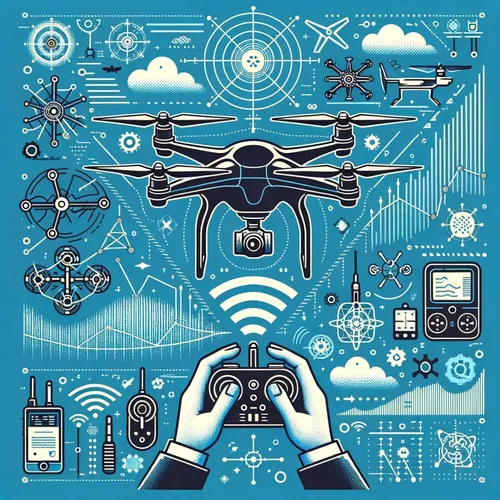Drones Soar High: Juicy Secrets of the 58 Billion Dollar Industry Revealed
- Author
- Quiet. Please
- Published
- Sun 03 Aug 2025
- Episode Link
- https://www.spreaker.com/episode/drones-soar-high-juicy-secrets-of-the-58-billion-dollar-industry-revealed--67235311
This is you Commercial Drone Tech: Enterprise UAV Solutions podcast.
Commercial drone technology is rapidly redefining what’s possible for enterprises across key sectors like construction, agriculture, energy, and infrastructure inspection. According to Statista, the global commercial drone market is expected to exceed 58 billion US dollars by 2028, with much of this growth driven by industry-specific solutions that deliver measurable returns on investment. For instance, construction firms increasingly use drones for site mapping, progress tracking, and safety inspections. Studies from DroneDeploy highlight that some construction companies have reduced survey times by up to 75 percent with drone adoption, translating directly to lower labor costs and fewer project delays. In agriculture, drones equipped with multispectral cameras enable large-scale crop health monitoring and precise pesticide application, leading to yield improvements and significant resource savings.
Energy and infrastructure operators are embracing drone technology for asset inspection—conducting routine checks of wind turbines, solar farms, and power lines without putting crews at risk. This not only reduces operational hazards but also minimizes downtime; according to recent figures from PwC, drone-based inspections can be up to five times faster and 30 percent cheaper than traditional methods.
Managing these benefits at scale demands robust enterprise drone management solutions. Platforms like FlytBase, DJI FlightHub, Votix, and Aloft provide end-to-end systems for mission planning, compliance tracking, flight log management, and integration with broader business tools. FlytBase, for example, delivers AI-powered real-time analytics and enterprise-grade data security, and allows connectivity with third-party enterprise systems—essential for ensuring a seamless fit into existing workflows. Cloud-based platforms enable centralized fleet control and make regulatory compliance, data privacy, and maintenance scheduling easier to manage, as seen in Aloft’s FAA-approved Air Control system. Automated reporting, geofencing, and risk assessment features help enterprises comply with evolving regulations and internal audit requirements.
From a news perspective, this week saw the FAA expanding its Beyond Visual Line of Sight waivers to more enterprise drone operators, opening the door for larger-scale deployments. DJI announced integration partnerships with major construction and energy software vendors, supporting streamlined data migration from the flight field to enterprise dashboards. Meanwhile, tech media reported record investment rounds for several drone AI startups, highlighting continued confidence in automation and analytics.
For organizations considering drone adoption or expansion, practical steps include evaluating use cases with clear ROI—such as reducing inspection cycle times or improving site documentation accuracy—choosing a management platform that supports regulatory and IT needs, and investing in formal pilot training and safety audits. Leaders should also ensure regular review of compliance and data security protocols to stay ahead of regulatory changes.
Looking ahead, trends suggest even deeper AI integration, greater autonomy through drone-in-a-box deployments, and tighter alignment between drone platforms and existing enterprise software ecosystems. As automation pushes further into frontline operations, early movers stand to capture efficiencies and competitive advantage.
Thanks for tuning in today. Come back next week for more insights on enterprise technology. This has been a Quiet Please production, and for more, check out QuietPlease Dot AI.
For more http://www.quietplease.ai
Get the best deals https://amzn.to/3ODvOta
